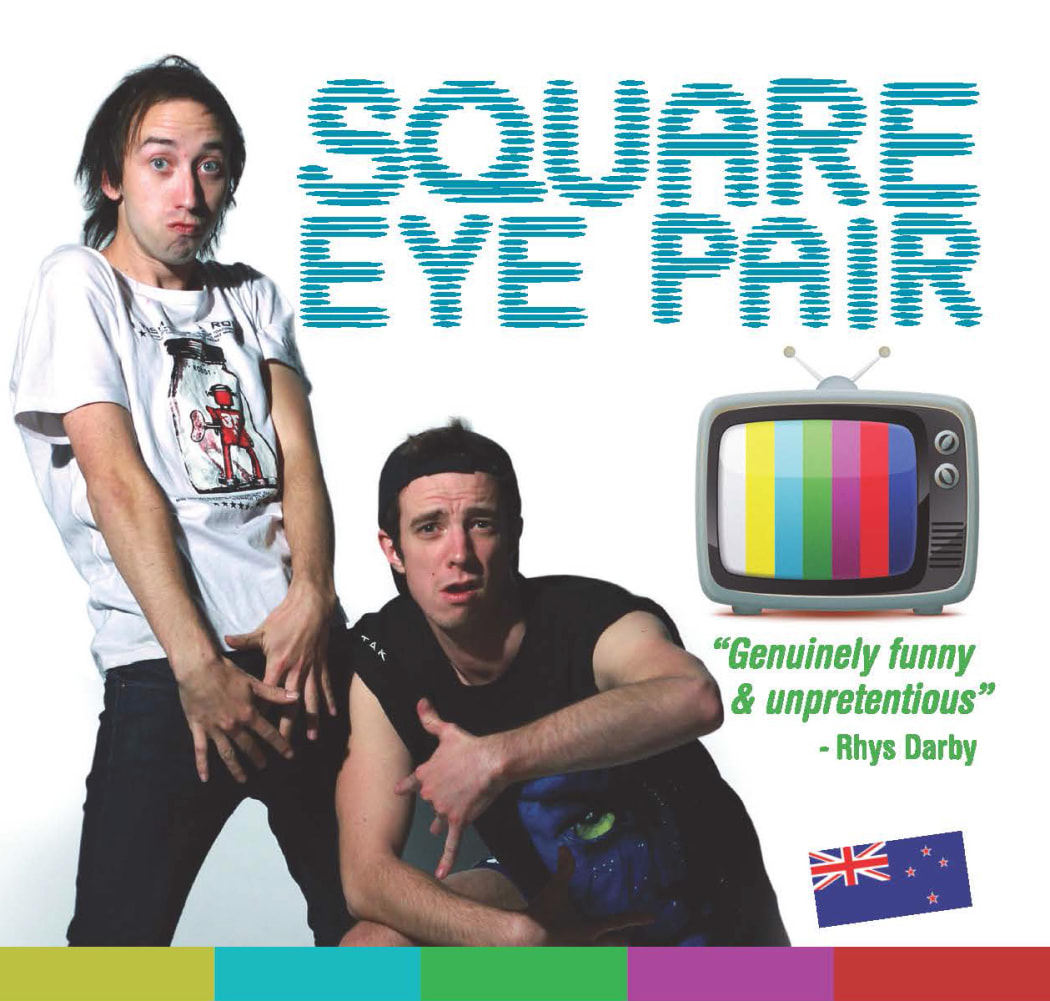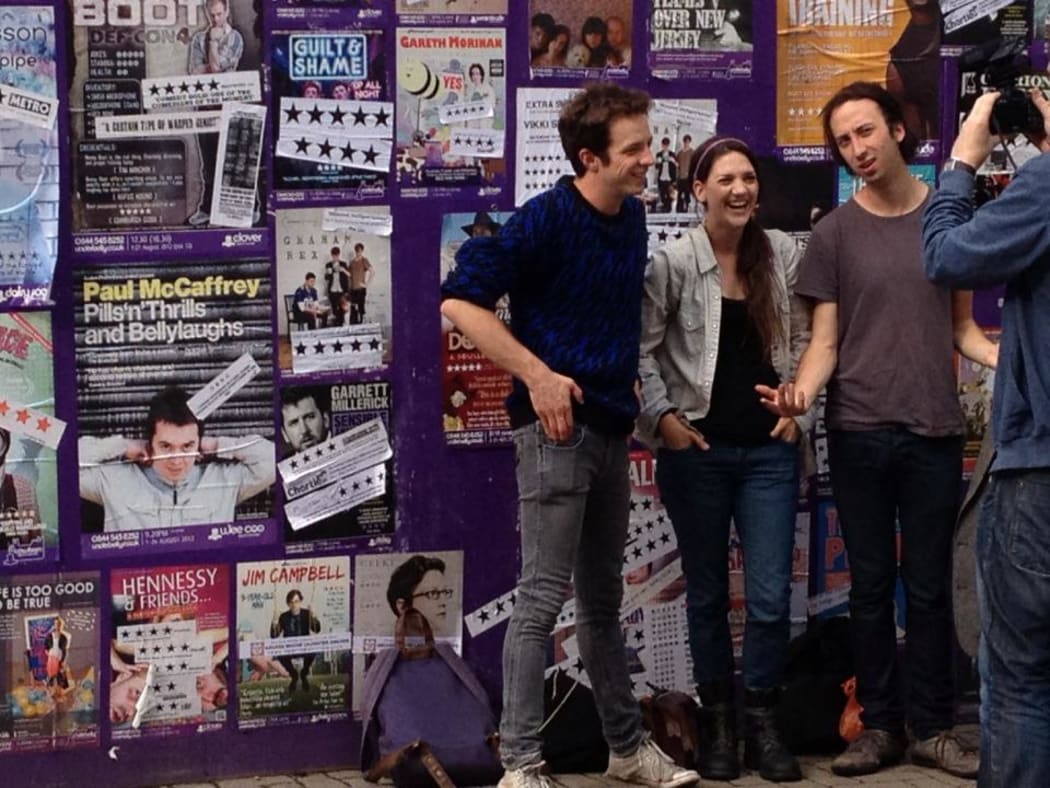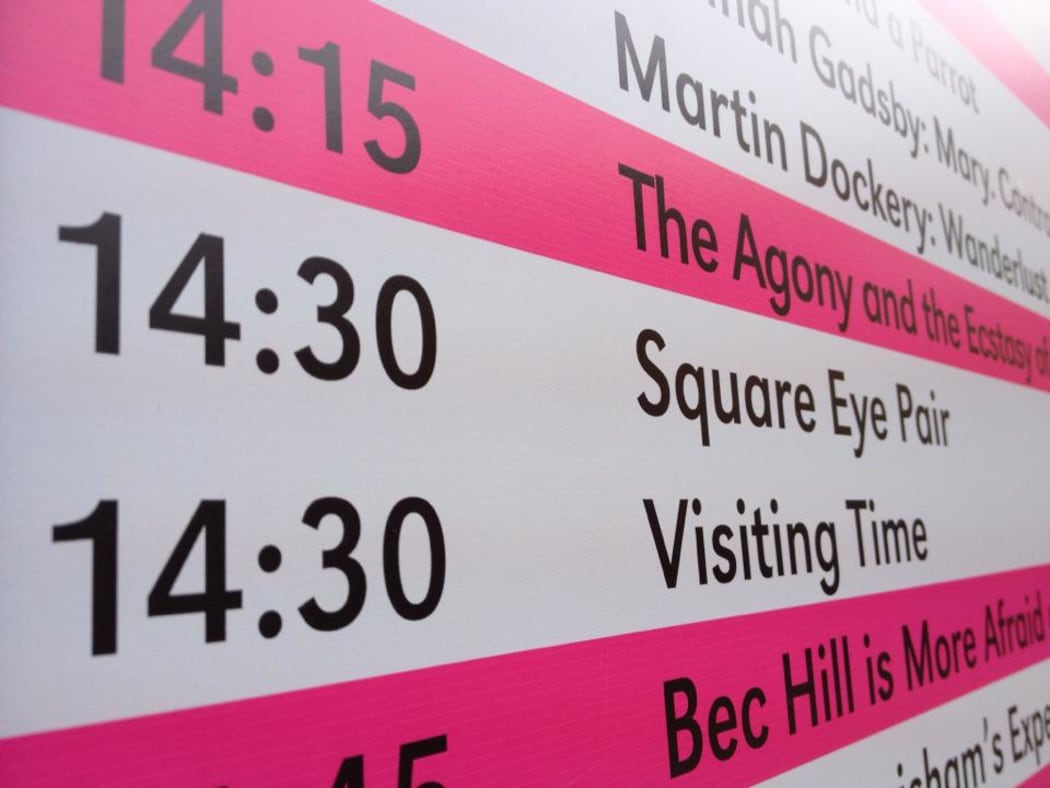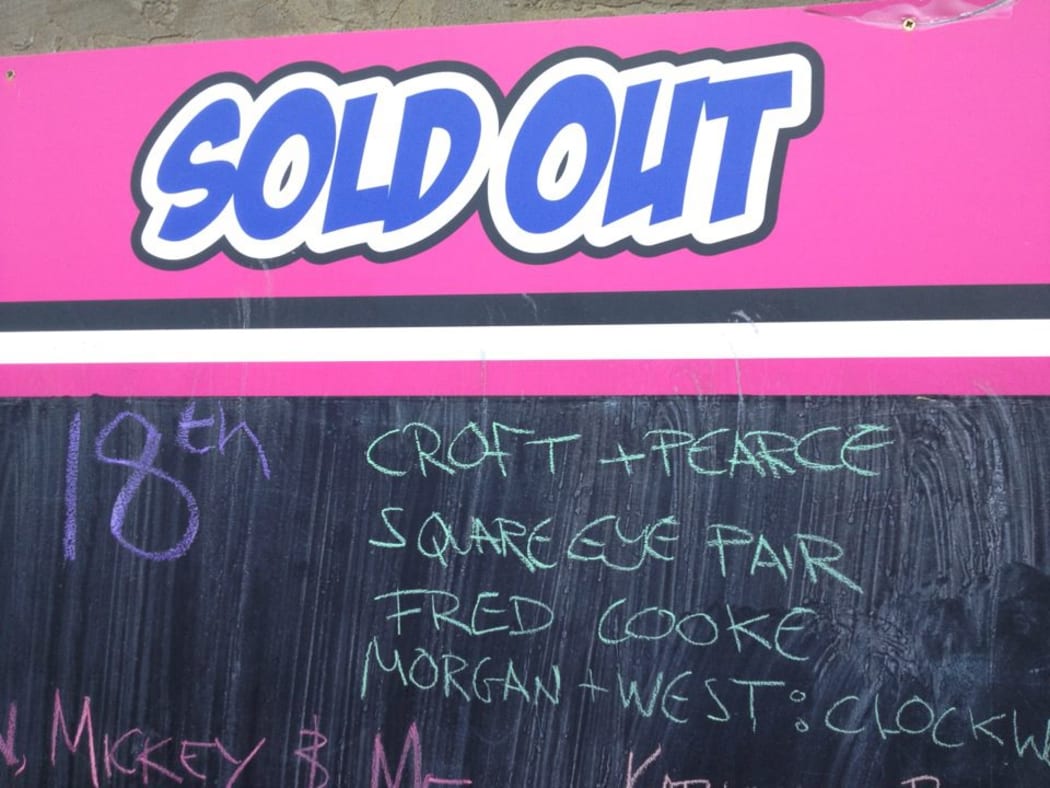On the other side of the world right now – well, their tomorrow – the Edinburgh Festival Fringe is about to get underway. With thousands of people taking to hundreds of makeshift stages for the entire month of August, it’s the largest arts festival in the world. Some shows are spellbinding; others are failed experiments that are painful to sit through. Edinburgh might be big, but it’s still a fringe festival.
On this side of the world, it’s seen as a rite of passage, capable of launching careers and crushing spirits. Of the hundreds of New Zealand theatremakers, comedians, playwrights and performers that flock to Edinburgh every year, some want to change their world with their art; others are just addicted to a month-long stint spent performing in one of the most challenging and rewarding environments of its kind. Few, if any, will start September with healthy bank balances.

Square Eye Pair Photo: Supplied
Two years ago, almost to the day, I flew to Edinburgh to perform Square Eye Pair, a play I had written with my friend Eli Matthewson. We arrived in Scotland’s capital city as complete unknowns, already out of pocket with no guaranteed audience for the month-long run of shows that lay ahead. But, waiting for my bag at the conveyer belt, I was confident we’d emerge the other side a success story, despite the fact that I had only an hour to get from the airport to pack-in and my first technical rehearsal.
Minutes passed as I watched a small backpack – certainly not mine, which was full of the props we needed for the show – go round and round on the otherwise empty carousel. Then it stopped.
I looked at the elderly woman who was waiting next to me with a pained expression.
“Aw, not fucking again,” she said in her thick Scottish accent. “This always happens at this fucking airport.”
“What do we do?” I asked as I realised that half my show had just become impossible.
“Not a lot,” she replied unhelpfully.
By the time my bag arrived in Edinburgh, we’d replaced the missing props and fallen into the routine that would eat away at us for all of August.
If you’re not already a well-established performer in the UK (and sometimes even if you are), to get an audience to your show, you have to spend hours standing alongside every other performer in Edinburgh, shoving flyers into hands that are already full of them. Hopefully yours is the one they hold onto.

L-R: Eli Matthewson, Elise Whitson and Hamish Parkinson at the Edinburgh Fringe Photo: Supplied
During the Fringe, Edinburgh swells from a city of about 480,000 people to more than a million. At times what feels like the entire million squeeze themselves onto the historic Royal Mile, a cobbled street that runs from Edinburgh Castle to Holyrood Palace, parts of which are blocked off from traffic to let performers stand shoulder to shoulder, flyers at the ready for any punter that might pass by.
It’s the busiest, nosiest, most cramped place in the world, like venturing into the middle of the crowd at a music festival, except you do it every day for a month, and some of the people in the crowd are human statues dressed as Heath Ledger’s Joker who aren’t even professional enough to stand still.

One of thousands at the Edinburgh Fringe Photo: Supplied
But none of us could outshine the old man on the mobility scooter who would turn up every day and loudly proclaim “I’M NINETY-TWO YEARS OF AGE, AND I STILL COLLECT FER CHARITY” while shaking his money tin at people desperate to support any other cause than theatre folk full of enthusiasm for their own shows.
This Fringe clashed with the London Olympics, and, as dejected comedians grumbled to me over ciders, audience turn-out was low. Some days, performers visibly outnumbered members of the public, turning the Royal Mile from a heaving buzz of activity to a long stretch of confused-looking circus rejects staring at each other. On those days, one local’s suggestion as he sidestepped between us that we “…all fuck off” seemed like a good idea. Even the 92-year-old would lose the will to ask for money, and simply mutter as if to himself “Do any of ye care?”
What mattered to audiences were positive reviews. With thousands of shows to choose from, five and four stars made the decision easier, which wasn’t great news for those of us with three.
For one show, on what’s known in the Fringe as ‘Black Thursday’, the day after previews and openings with cheap tickets, we performed to an audience of three people sitting far apart from each other. One arrived late and left early. The other two elderly ladies sat with their arms crossed and scowled at us for wasting their limited time left on earth.

Square Eye Pair: Sold Out Photo: Supplied
At one point I play an ecstatic infomercial presenter, selling a tiny blender. I asked the two bored ladies “ARE YOU READY TO BLEND?” After a dead silence, one shrugged and replied “I guess”.
Needless to say, we didn’t change the world with our play, but it did get better, and in 27 shows we had two full houses. We didn’t flop, but we didn’t soar either.
But taking part in something like the Edinburgh Fringe is about more than exposure, or financial gain, or even breaking even. It’s when you learn to push your work to be the best it can be, because it has to be if you want anyone to see it. You learn to stand by your style, what sets you apart from your peers, how to sell yourself. I arrived back in New Zealand with more confidence, more clarity, more commitment.
What I didn’t arrive with was my luggage. That fucking airport lost it again.
We’ll have more reviews, interviews and features from the Edinburgh Festival Fringe in the coming month, including a weekly blog from Fan Fiction Comedy’s Joseph Moore, documenting his “experiences, creative highs, and no doubt psychological rock bottoms at this bloody draining festival”.
This content is brought to you with funding assistance from New Zealand On Air.

